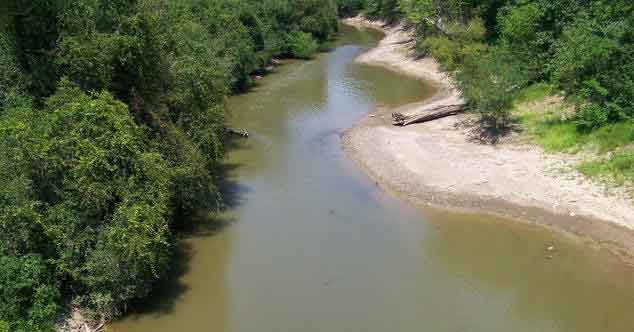The bipartisan Infrastructure Investment and Jobs Act is being called a “once-in-a-generation investment.” For the nation’s legacy of abandoned coal mine lands and the communities and lands they impact, the Act means even more.
The bipartisan Infrastructure Investment and Jobs Act included a “win” that PRN had been advocating for — it reauthorized the expired funding mechanism (a per ton fee on mined coal) for the Abandoned Mine Land (AML) Reclamation Program trust fund. And it will also inject an additional $11.3 billion into the program over the next 15 years. This effort will put people to work restoring polluted lands and waters, and it will help build a new economic foundation in Illinois’ coal communities.

History of Abandoned Mine Lands
Nearly two centuries of coal mining occurred in Illinois before the passage of any laws to regulate the operation or clean-up of the industry. By the late 1970s, over 200,000 acres of Illinois land had been affected by surface and underground mining. Nationwide that number was over a million acres. In response to extensive environmental problems, as well as growing health and safety concerns, Congress passed the Surface Mining Control and Reclamation Act of 1977 (SMCRA).
SMCRA created two programs. One regulated the operation and reclamation of new and active coal mines. The other dealt with lands that were mined and abandoned prior to the passage of the law. These unreclaimed lands that were mined prior to 1977 are defined legally as “abandoned mine lands,” and they are often also called “pre-law” mined lands or AML lands. In addition to legacy damage to land, these sites include impacts to water, air, and public safety.
The AML program under SMCRA established a fee on coal production to fund the cleanup and reclamation of abandoned mine lands. The fee is collected on every ton of coal mined and then distributed to the states and tribes running AML programs. In Illinois, the Illinois Department of Natural Resources is responsible for the AML Program. The future of the funding and national AML reclamation efforts had been in question after the collection of the fee expired in September 2021.
Future of the AML Program
The 2021 infrastructure bill is a lifeline to a severely underfunded program that had an uncertain future. The $11.3 billion boost, with an estimated $1.2 billion to Illinois, represents the largest-ever investment in AML clean-up, and it will create billions in economic activity and thousands of jobs in coal communities across 25 states and three tribes. It also reauthorizes the funding mechanism for the AML trust fund, a per-ton fee on current coal production, for 13 years at 80% of the prior level.
Our Advocacy Continues
Unfortunately, the new AML funding does not allow states to set money aside for long-term acid mine drainage (AMD) treatment facilities. Acid mine drainage refers to the discharge of rust-orange colored, acidic water from a mining site. The acidic water is created by the oxidation of pyrite and sulfide minerals that were exposed during the mining process, and the resulting pollution is harmful to the health of communities and wildlife. Remediation of this pollution requires long-term treatment facilities and, in turn, long-term funding. This spring and summer PRN and our supporters have been advocating for the STREAM Act. The STREAM Act is new, bipartisan legislation that would guarantee that AML clean-up funding can be directed to address AMD now and into the future. On July 13, 2022, the bill passed out of a House Committee and we are certain that with continued advocacy and your support we can ensure that Illinois waters are protected from AMD for generations to come.







